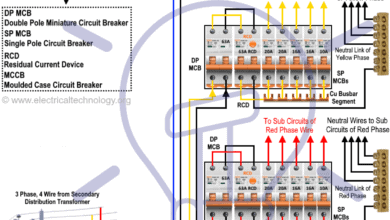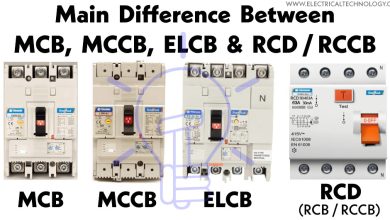Why Don’t Bug Zappers and Fly Swatter Bats Kill Humans?
Do Mosquito Killer Rackets, Fly Swatter Bats, Bug Zappers, Etc., Harm a Person?
What is a Bug Zapper?
A big zapper is an electric device that uses a bait to attract the insects and electrocute them using a high voltage. There are two wire meshes that carry high voltage. When the insect drawn by the bait comes between the meshes, it is electrocuted with a spark and crackle. A bug zapper is also known as an electric fly swatter, electric fly killer, electric fly electrocution trap or more formally called an electrical discharge insect control system.
How Does a Bug Zapper Work?
There are different types of bug zappers being used. The basic working principle and circuit diagram of mosquito killer is shown in the previous post. However, all of them use the same principle to attract the insects and electrocute them. There are mainly two components
Bait
The bait is used to draw the insects. In earlier designs, meat was used to attract insects with incandescent bulbs. However, the design was too expensive for practical use. Therefore, the modern bug zapper uses ultraviolet light as they are attracted toward ultraviolet and yellow light.
Mosquitoes are generally attracted to carbon dioxide and the water vapor released in the breath of mammals. Therefore there are certain bug zapper that emits carbon dioxide.
Electrical Grid
There is an electrical grid that surrounds the bait. Usually, there is a non-electrical outer grid to prevent shocking any human. The electric grid is made of two meshes oppositely charged. When a mosquito comes into contact with them. The high voltage charge instantly flows through it causing it to burst with a spark.
This electric grid is charged up to 3kV to 9kV depending on its design.
Related Posts:
- Why Can’t a 12V Car Battery Electrocute You?
- Why Don’t Birds and Squirrels Get Electrocuted on Power Lines?
Can Fly Swatter Bats Harm Humans?
The question arises does the bait i.e. the ultraviolet light harms our skin or does the high voltage electrical grid harm us? Both of them are explained briefly down below.
Is UV Light Harmful?
As we have earlier discussed, bug zapper emits ultraviolet light and we know ultraviolet light is harmful for our skin. That is why we use sunscreen, glasses, and a wide-brim hat to protect ourselves from the UV radiation of the sun on the beach.
Do not panic, the UV light emitted from the bug zapper is not dangerous. Actually, the black light emitted from bug zapper is near-ultraviolet light and is actually a fraction of what we are exposed to in our daily life. Studies suggest that these UV lights have been around for 80 years but there hasn’t been one single case.
Related Posts:
- Which One Kills – Current or Voltage and Why? Amps vs Volts
- Which One is More Dangerous And Why? AC or DC ?
- Which One is More Dangerous? 120V or 230V and Why?
Can the Electric Grid Shock a Human Body?
The second question is that the electrical grid is charged up with very high voltage. And we know high voltage is dangerous as there are numerous “high voltage” signs used to keep people out of that area. So, can this electrical grid harm any person?
To better understand this problem one has to know about ideal voltage source and practical voltage source. The bug zapper is not an ideal source. It has very high voltage but it does not have enough power to provide current for a long time.
Sure the insect are instantly vaporized but that is due to their small body. The bug zapper can supply current in a few milliamps for a few microseconds which is enough for an insect. However, a person might feel a jolt for an instant before the voltage abruptly decreases.
It is not the voltage that kills but rather the prolonged current to deliver enough energy to stop a human heart. The bug zapper cannot provide sustained energy to stop a beating heart.
However, the tiny Electric spark generated between the electric grid can ignite any flammable liquid. Therefore, it should not come into contact with any flammable skin product or any other flammable surface.
To prevent touching the electrical grid, a plastic cage is placed on top of the electrical grid.
Health Risk of a Bug Zapper
Another health risk that goes unnoticed is during the electrocution of insects. The bug dies with a spark and burst into the air releasing thousands if not millions of germs. The air surrounding the bug zapper is contaminated with bacteria and viruses that can enter the human bloodstream through inhaling and by settling in our food.
Related Posts
- Electric Fence – Working, Types, Protection & Installation
- Is Lightning AC or DC ?
- What Happens When Aircraft and Plane are Struck by Lightning?
- Why Avoid Plugging Space Heaters into Power Strips or Extensions?
- Why are Salt and Charcoal Added in Earthing Pit for Grounding?
- Which One is More Dangerous? 50Hz or 60Hz in 120V/230V & Why?
- What Happens if a Battery is Connected to the AC Supply?
- What Happens to the Battery with Reverse Polarity Wiring Connection
- Why Can’t We Store AC in Batteries instead of DC?
- What Happens When an AC Line Touches a DC Line?
- Electrical Shock Hazards & Its Effects on Human Body
- Personal Protective Equipment (PPE) for Electrical Works
- Protective Actions to Avoid & to Reduce Electric Hazardous
- Why Earth Pin is Thicker and Longer in a 3-Pin Plug?
- Why Does the Heating Element Glow but Not the Cord of Heater?
- Why are Stones laid in an Electrical Substation?
- What happens if You Connect a 3-Φ Induction Motor to 1-Phase Supply?
- What happens to the 3-Phase Motor When 1 Out of 3 Phases is Lost?
- What Happens if We Connect a Polar Capacitor the Wrong Way?









